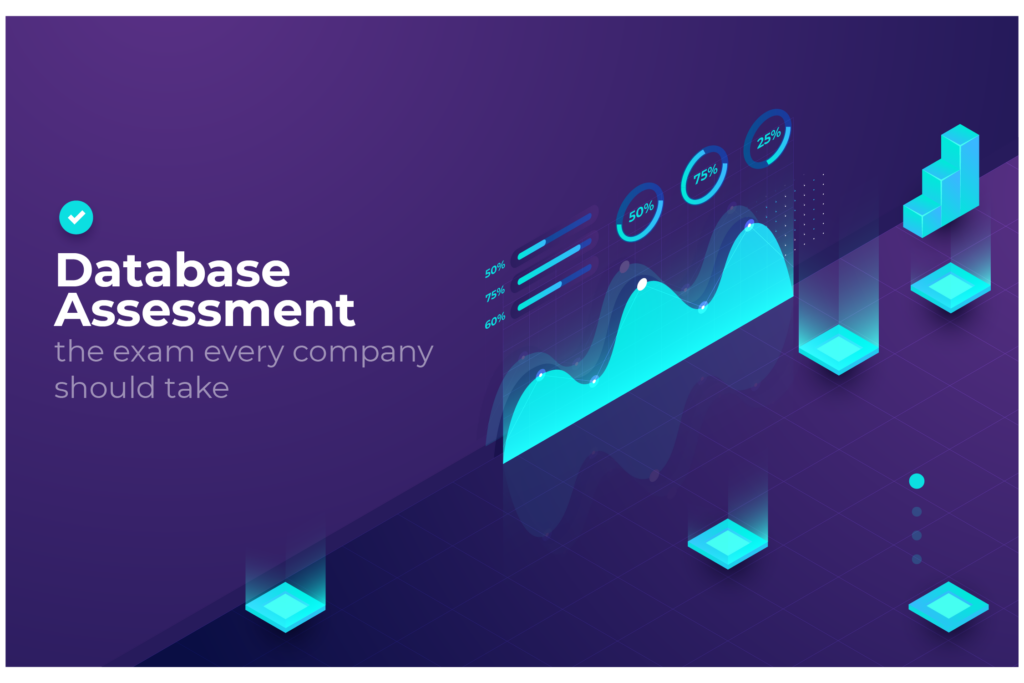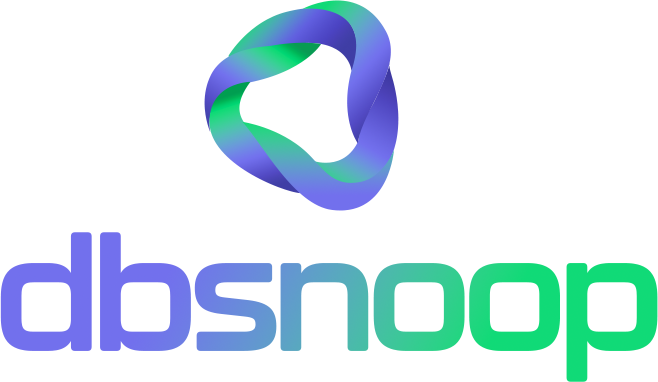

A database is a complex and dynamic asset, the operational heart of any modern company. As such, it requires more than just the monitoring of superficial metrics to ensure its long-term health and efficiency. It requires periodic and in-depth examinations, a true “assessment,” to diagnose underlying performance conditions, identify configuration risks, and optimize its architecture for future challenges.
Ignoring this need is an IT governance failure that invariably results in performance degradation, increased costs, and, in the worst-case scenario, critical incidents that impact the business.
A database assessment is not a simple check of uptime or CPU consumption. It is a holistic and multi-layered analysis that evaluates the performance, configuration, security, and overall health of the environment. For many companies, however, the idea of conducting an assessment is paralyzing. The traditional manual process is notoriously time-consuming, expensive, and invasive.
This article details why an assessment is a non-negotiable component of IT management, explores the technical limitations of the manual approach, and demonstrates, in practice, how the technology of dbsnOOp’s Autonomous DBA transforms this process, making it fast, data-driven, and immensely valuable.
Why is a Database Assessment a Critical Component of IT Governance?
A database assessment is not a reactive project, but a proactive practice with clear business objectives. It is triggered by specific needs aimed at optimizing costs, mitigating risks, and enabling growth.
Performance Optimization and Resolution of Chronic Slowness
This is the most common trigger. The application is slow, users complain about timeouts, and support teams are overwhelmed. Standard monitoring tools cannot identify an obvious cause. A deep assessment is necessary to go beyond the superficial symptoms and find the root cause of the degradation, which often lies in inefficient queries or a suboptimal data architecture that has not kept up with business growth.
Cloud Infrastructure Cost Reduction (TCO/OpEx)
AWS, Azure, or GCP bills are rising consistently, often without a proportional increase in transaction volume. Poorly optimized databases are a major cause of resource waste in the cloud. They consume more CPU cycles, require more provisioned IOPS, and use more memory than necessary. An assessment identifies these inefficiencies, allowing for an optimization that results in a direct and measurable reduction in the Total Cost of Ownership (TCO) and monthly operational costs (OpEx).
Risk Mitigation Before Migration Projects
Planning a migration, whether from on-premises to the cloud or between cloud providers, without a prior assessment is a recipe for disaster. It is imperative to deeply understand the workload profile, demand peaks, and existing bottlenecks in the source environment. Migrating a database with unresolved performance problems only amplifies these issues in a new and often more expensive infrastructure. The assessment provides the necessary data for successful migration planning and correct resource sizing in the target environment.
Configuration, Security, and Compliance Auditing (GDPR/LGPD)
An assessment also serves as a technical audit. It verifies that the database configurations (system parameters, memory management, etc.) are aligned with best practices for the specific workload. Additionally, it can be used to audit security and access configurations, ensuring that the environment complies with internal policies and external regulations like GDPR/LGPD.
The Technical Limitations of the Manual Assessment Process
The traditional process for conducting an assessment is the main reason why many companies postpone or execute it incompletely. It is intensive in manual labor and has inherent technical disadvantages.
The Prohibitive Duration and Cost of Manual Data Collection
A comprehensive manual assessment requires the allocation of one or more senior DBAs for a period that can range from one to several weeks. The process involves writing and executing multiple custom scripts to collect data from various sources (DBMS performance views, operating system logs, etc.). The collected data needs to be exported, consolidated in spreadsheets or a local database, and only then can the analysis begin. The cost, just in expert labor hours, is extremely high.
The Risk of Performance Overhead in Production Environments
To obtain the data granularity needed for a deep diagnosis, it is often necessary to enable detailed tracing and logging levels in the production environment (e.g., SQL Trace in Oracle, extended events in SQL Server). These actions are invasive and can, by themselves, generate significant performance overhead, impacting the end-user experience precisely while the assessment is underway.
The “Snapshot” Analysis and the Loss of Intermittent Problems
Due to its manual nature, a traditional assessment usually captures data during a specific and limited time window. The result is a “snapshot” that may not be representative of the actual workload. Critical but intermittent performance problems, such as a locking issue that occurs only during a specific batch process at 3 a.m., can be completely invisible if they do not occur within the collection window.

The Lack of Standardization and the Subjectivity of Human Analysis
The quality and depth of a manual assessment depend entirely on the experience, methodology, and even the biases of the DBA conducting it. Different experts may focus on different areas and reach different conclusions from the same dataset. The process lacks a standardized, objective, and repeatable methodology, making it difficult to compare results over time.
The dbsnOOp AI-Accelerated Assessment Methodology
dbsnOOp’s technology was designed to systematically overcome all the limitations of the manual process. It uses the power of AI and automation to perform a deep, fast, and objective data-driven assessment.
Phase 1: Continuous and Non-Intrusive Data Collection
The first step is to replace manual and invasive data collection with an automated and lightweight process.
- Mechanism: A dbsnOOp data collector is installed quickly and securely. It operates with minimal “read-only” permissions, accessing only the metadata and performance views of the database (e.g., v$session in Oracle, pg_stat_activity in PostgreSQL), without ever touching the client’s business data.
- Benefit: Data collection is continuous and has a near-zero overhead (<1%). This means the assessment can analyze a complete business cycle (24 hours or more) without any risk or impact to the production environment. It ensures the capture of intermittent problems that a manual “snapshot” would miss.
Phase 2: Workload Analysis and Workload Characterization
Once the data is collected, the Autonomous DBA‘s AI performs an analysis that would be impossible for a human at scale.
- Mechanism: The AI processes thousands of metrics to characterize the workload profile. It identifies access patterns, transactional peak hours, execution windows for batch processes (ETLs, backups), and the nature of the load (OLTP vs. OLAP).
- Benefit: Instead of looking at isolated metrics, the assessment begins with a holistic understanding of how the database is actually used. This provides the essential context for all subsequent analyses.
Phase 3: Root Cause Analysis of Bottlenecks with Top-Down Diagnosis
This is the central functionality that accelerates the diagnosis.
- Mechanism: For each period of high latency or resource consumption identified, the AI applies the Top-Down Diagnosis. It correlates infrastructure metrics (I/O, CPU) with database wait events and, finally, with the responsible SQL queries, users, and applications.
- Benefit: The process that takes days in a manual analysis is executed in minutes. The assessment pinpoints the root cause of the bottlenecks with surgical precision, eliminating guesswork.
Phase 4: SQL Code and Execution Plan Efficiency Audit
Most performance problems lie in the SQL code. dbsnOOp’s AI performs a large-scale audit.
- Mechanism: The platform analyzes the execution plans of thousands of queries to identify patterns of inefficiency, such as full table scans, improper use of indexes, and costly JOINs. The AI-Powered Tuning functionality comes into play here.
- Benefit: The assessment reveals not only the slow queries but why they are slow. It identifies the “technical debt” accumulated in the code and provides the basis for optimization.
Phase 5: Configuration and Index Health Audit
A complete assessment must evaluate the database’s “hygiene.”
- Mechanism: dbsnOOp analyzes the database instance’s configurations and compares them with the recommended best practices for the observed workload. Additionally, it audits the health of the indexes, identifying fragmented, redundant, or unused indexes (which represent an unnecessary maintenance cost).
- Benefit: This analysis reveals configuration risks and optimization opportunities that are not directly linked to a single query but affect the health and resilience of the entire system.
The Assessment Report: From Data Analysis to Action Plan
The result of an assessment conducted with dbsnOOp technology is not a spreadsheet with raw data. It is an intelligence report designed for action.
Report Structure:
- Executive Summary: An overview of the environment’s health, with a performance “score” and the main risks identified.
- Workload Analysis: A detailed profile of your database’s behavior.
- Top N Queries by Resource Consumption: Prioritized lists of the queries that consume the most CPU, I/O, and execution time. For each query, the report includes its execution plan and an analysis of its inefficiency.
- Infrastructure Bottleneck Analysis: Details of lock contention issues, I/O bottlenecks, and other resource limitations, with the identification of the causing processes.
- Prioritized Optimization Plan: The most valuable component. A list of concrete and actionable recommendations, such as “Create index X on table Y,” “Update statistics on table Z,” “Rewrite query W to avoid a full table scan.” The recommendations are prioritized by their expected impact, providing a clear roadmap for the IT team.
The Assessment as a Pillar of IT Governance
In a world where data is the most valuable asset, operating without a deep understanding of your data infrastructure’s health is a risk that no company can afford to take. A database assessment should not be seen as a reactive project triggered by a crisis, but as a pillar of good IT governance.
The manual, slow, and subjective approach is no longer suitable for the complexity of modern systems. By leveraging AI and automation, dbsnOOp transforms the assessment from a weeks-long process into a 24-hour analysis, providing an optimization roadmap that allows companies to mitigate risks, optimize costs, and build a truly resilient data foundation.
Want to solve this challenge intelligently? Schedule a meeting with our specialist or watch a live demo!
Schedule a demo here.
Learn more about dbsnOOp!
Learn about database monitoring with advanced tools here.
Visit our YouTube channel to learn about the platform and watch tutorials.

Recommended Reading
- What is query degradation and why does it happen?: A database assessment is, in essence, a hunt for the causes of performance problems. This article details the most common “disease” that an assessment diagnoses: the silent degradation of queries. It is a fundamental reading to understand the type of deep problem that an analysis like dbsnOOp’s reveals.
- When are indexes a problem?: A quality assessment not only points out what is missing but also what is implemented incorrectly. This post delves into a very common technical finding in assessments: indexes that, instead of helping, hinder performance. It illustrates the depth of the analysis that dbsnOOp performs when evaluating the health of your environment.
- 24/7 monitoring of databases, applications, and servers: Think of the assessment as the complete medical check-up and the 24/7 monitoring as the smartwatch that continuously monitors your vital signs. This article expands on the need for holistic surveillance after the assessment, showing how the discovery of problems is the first step toward a continuous health strategy for your IT ecosystem.

